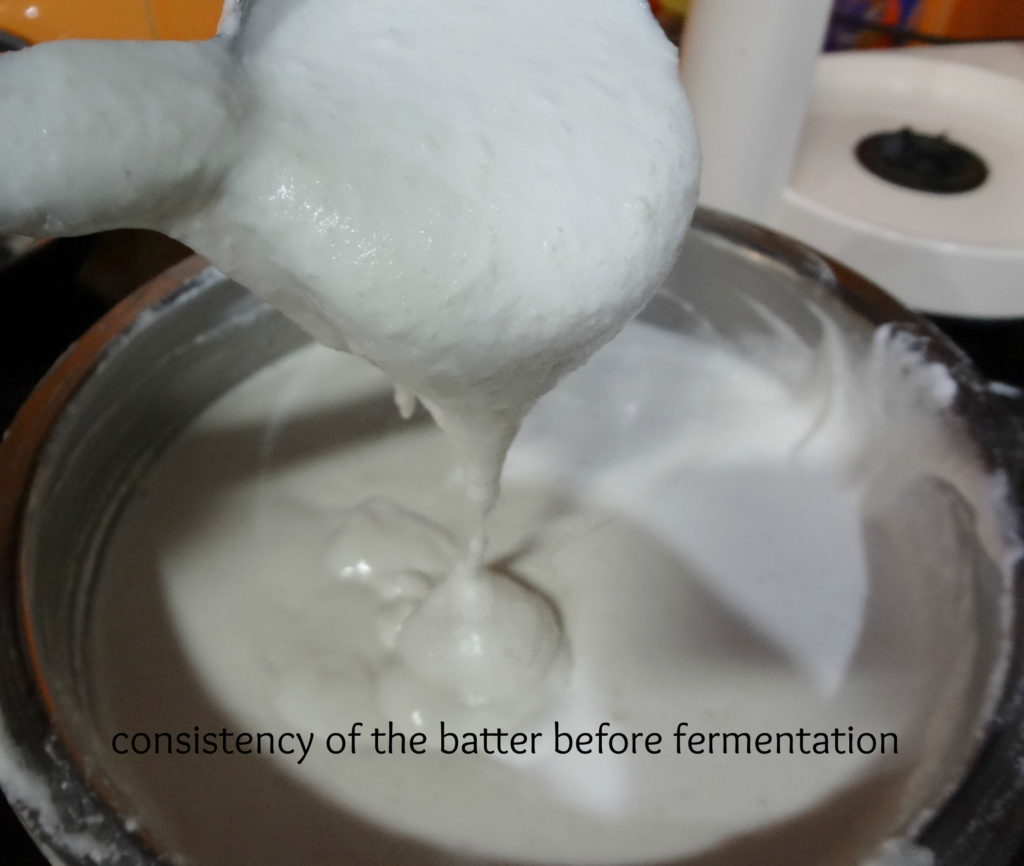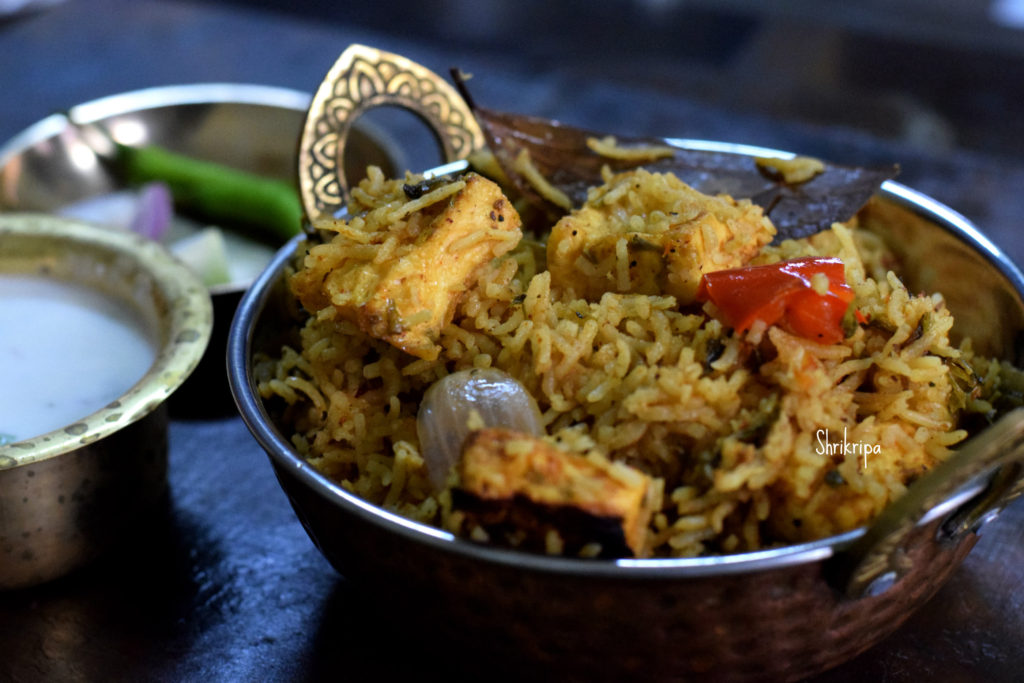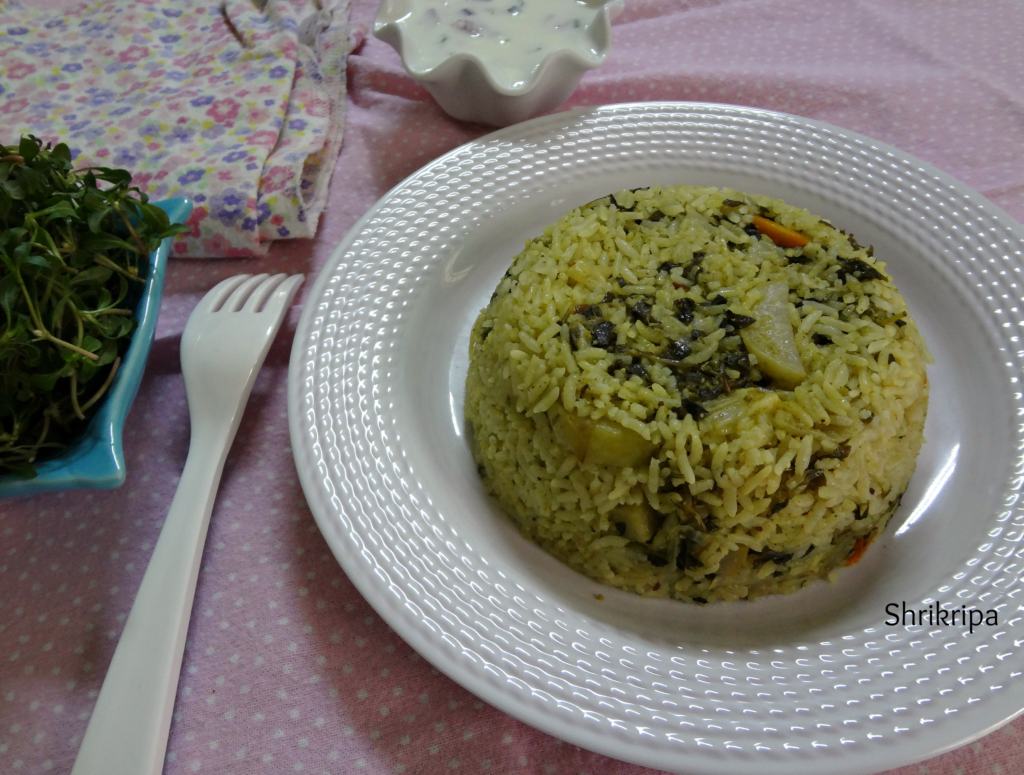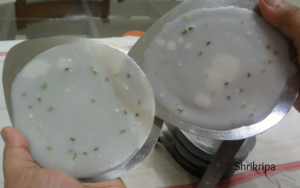Idli is very basic, staple breakfast of south India. It is very healthy steam cooked rice and lentil cake which is very nutritious too. Each place has their own rice and lentil ratio or proportion and grinding technique also changes from region to region. In Mangalore, we soak rice and dal separately and grind very fine paste of urad dal and either we mix rice rawa or we are grinding the rice, we keep it a little coarse, hence this batter will be a little coarse. After fermenting the batter, the next day we proceed to make idlies by using either idly stand or idly cups. In our region, idly cups are regular and very common in every house hold and we use special type of idly steamer and invariably we use this for so many kinds of steam cooking.

Ingredients for idli batter:
Idly rice or Idly rawa – 2 cups
Urad/Black gram dal – 1 cup
Poha – 1 fist full
salt
Method:
-Wash and soak rice in one vessel. If you are using idli rawa, you can wash idly rawa and put very little water and keep aside.

-Wash Urad dal and poha in another vessel and soak for 3 to 4 hours.
-At first, drain excess water from urad dal and put this into wet grinder.
-Grind this into smooth paste by adding water in-between while grinding.
-When urad dal batter becomes fine and smooth, its consistency becomes almost double and colour of the batter looks milky white.

– When you think urad dal batter is ready, add soaked rice or rice rawa by draining its soaked water.
-You can use this water while grinding or adjusting the consistency of the batter or to wash wet grinder at first to remove the dough that is stuck on the stone.
-Grind this into small rawa consistency by adding salt and remove this ready batter into big vessel. If you are using rice rawa ,allow batter to mix for couple of minutes and then remove.
-I usually grind urad dal first, then mix in drained rice so that batter mixes uniformly and becomes light and airy.
– Batter consistency should be a little thick and when u hold and drop the batter it should not drop very easily and it should stick to the spoon.

-Close the lid and keep this batter for 8 to 10 hours or more (according to outside weather where you live) for fermentation.
-Next day morning fill idly steamer or pressure cooker with sufficient water, place the porous plate at the centre of the vessel and keep this on the fire.

-Mix fermented batter vigorously, if needed add water and adjust the consistency keep it ready.
-Rinse the idly moulds in fresh water once, it will act as a non-sticky layer between idly and mould.
-When water starts boiling, pour one spoon of batter into respective moulds and steam cook.

-If you are using cups, cook this in a steamer for 15 to 20 minutes. Cups holds more batter than idly stand.
-If you are using idly stand, 7 to 8 minutes of steam cooking is sufficient.
-When it is done, switch off the gas, open the lid and remove moulds outside.
-Once it is cool, remove idly and serve with chutney or sambar or with your choice of side dish.
NOTE:
-Use wet grinder to get awesome soft idlies.
– Use soaked and drained water from the dal or rice while grinding. It will enhance the taste.
-Always mix and pour the batter to the moulds, only after water starts boiling.















































